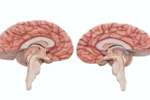A plant is only as powerful as its root, and the same goes for our nerves. If the root is bad, the whole plant suffers. If you are experiencing pain in your neck, arm, and hand, it might not be the result of sleeping wrong. You could be suffering from cervical radiculopathy.
Symptoms
Cervical radiculopathy occurs when a nerve in the neck is irritated at the spot where it branches away from the spinal cord, and it may cause discomfort that radiates down the arm and into the hand. This discomfort can take the form of a tingling sensation, numbness, or burning traveling along the shoulder, arm, wrist, and hand. Often the overall feeling is a combination of all three. Cervical radiculopathy can be misdiagnosed as carpal tunnel syndrome, which is also due to compression of a nerve, but specifically at the wrist. The key difference is the concentration of the pain—while the feeling in the hand and wrist may be similar, carpal tunnel syndrome does not cause discomfort up into the neck. A good way to tell if the pain is coming from the neck is to check if extending or straining your neck while turning your head increases the pain.
Causes
The most common causes of cervical radiculopathy are degenerative changes in the spine and herniated discs. Degenerative changes occur because as we age, the discs lose height, and the vertebrae get closer together. The body responds by creating more bone, which strengthens the spine but can also narrow the openings where the root nerves are and “pinch” the root. These changes are normal and happen in everyone, but not everyone experiences pain as a result. Cervical disc herniations may occur as the result of an injury but often occur spontaneously. The herniated disc causes inflammation with neck pain and may apply pressure to a nerve exiting the spinal cord, resulting in pain, numbness, tingling, and/or weakness in the shoulder, arm, and hand.
Diagnosis
To diagnose cervical radiculopathy, your doctor will want to understand your medical history and overall health. They will want to know about any prior conditions or injuries, especially those that have affected the neck or back. From there, they will conduct a physical examination by feeling along the affected area to check for tenderness, change in reflexes, range of motion, and loss of sensation. Your doctor may also have you bend or move your neck in certain ways to reproduce and/or relieve the symptoms. There are more advanced tests available that your doctor may choose to do depending on the results of the physical exam or after attempted treatment fails. These include imaging tests like MRI to see if the soft tissue is impeding the nerve root or if there is damage to the spinal cord, or x-ray to see if there is any narrowing of the openings around the root nerve or if there is disc damage. Other tests can determine whether the nerves are functioning properly. The most common of these tests is an EMG, which checks the electrical activity of the muscle and nerve conduction, making sure that the nerves are sending signals properly.
Treatment of cervical radiculopathy does not typically involve surgery and is usually simple and noninvasive. NS2 can help evaluate and diagnose potential cervical radiculopathy. But if surgery is needed, all of our surgeons are highly trained and skilled to perform the necessary procedure. So if you are experiencing symptoms and want to know more about treatment options, make an appointment today.






